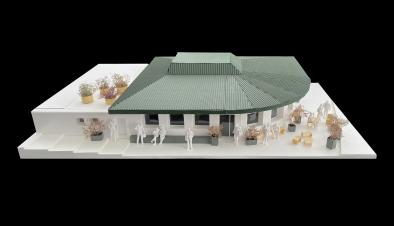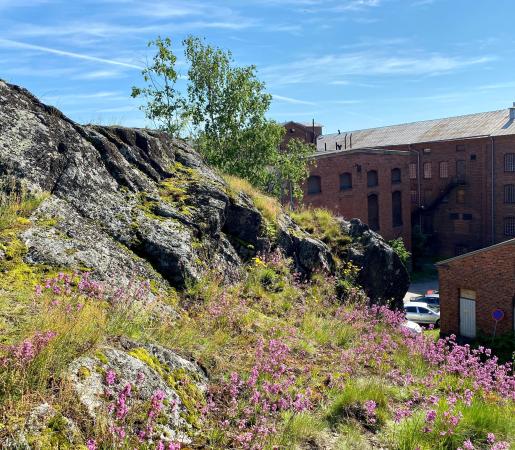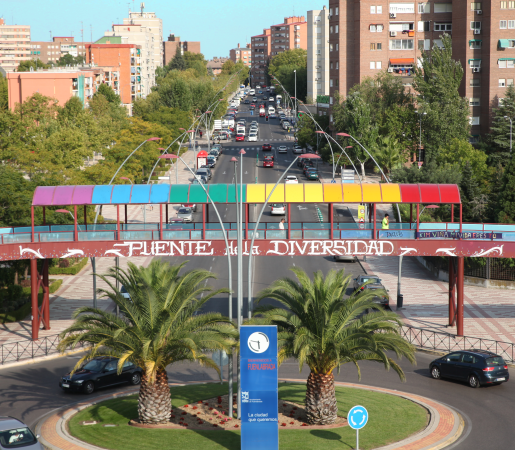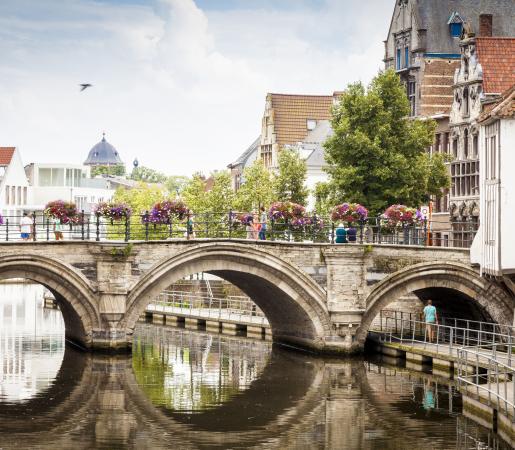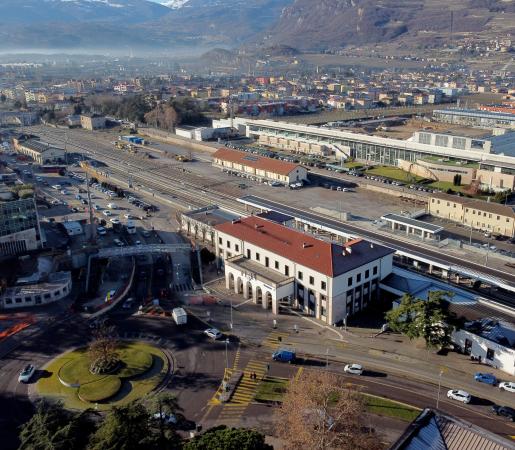
Rovereto
S4T - Station for Transformation
The Alpine town of Rovereto and its surrounding area need to adapt rapidly to the effects of climate change and mitigate the resulting loss of biodiversity, which is closely linked to territorial cultural heritage. To address this challenge, Rovereto is transforming the empty main building of its local train station, and the land around it, into a public-civic hub for joint actions related to climate change, biodiversity and heritage regeneration. As a centrally placed mobility hub for over 135 000 inhabitants, the station is an ideal public space for co-creating a territorial ‘think and action’ tank.
Our main challenges...
Rovereto’s functional urban area is experiencing rapidly escalating effects of climate change – such as water scarcity and shortages, heat islands, forest fires, extreme winds – which also threaten biodiversity.
Rovereto’s urban area is located in the Italian Alps. This region's adaptive capacity to climate change has been rated as dramatically low at the infrastructural, technological and institutional levels, and in terms of knowledge and awareness.
Climate change is a particular threat in the Alps, Europe's second largest biodiversity reservoir. Here, 13 000 plant and 30 000 animal species share their environment with 14 million human residents and about 120 million visitors per year.
and proposed solutions
Transgenerational and multidisciplinary knowledge transfer encourages the territorial exchange of novel solutions to tackle climate and biodiversity challenges. S4T is developing co-sharing, co-creation and outreach actions for extended inclusivity.
This sustainable solution includes the design and realisation of new spaces reflecting New European Bauhaus principles, and specific Environmental Social Governance and Territorial Impact Assessment-based monitoring environmental impact actions.
S4T offers adaptive, validated and replicable models involving local pilot actions, training to develop new skills, biodiversity dissemination actions, and digital simulations to facilitate adoption and replication of solutions in other urban settings.
Key figures
Milestones
Analysis of relevant ongoing projects and a programme of clustering actions
Kick-off event at the station with partners, stakeholders, potential beneficiaries and media
An innovative New European Bauhaus-designed regenerated hub for public-civic actions, including multiple spaces and an outreach module
The best applicable methodology for a collaboration led by public-civic organisations
A replication strategy extended to diverse ecosystems, based on simulated, modelled, and validated data
